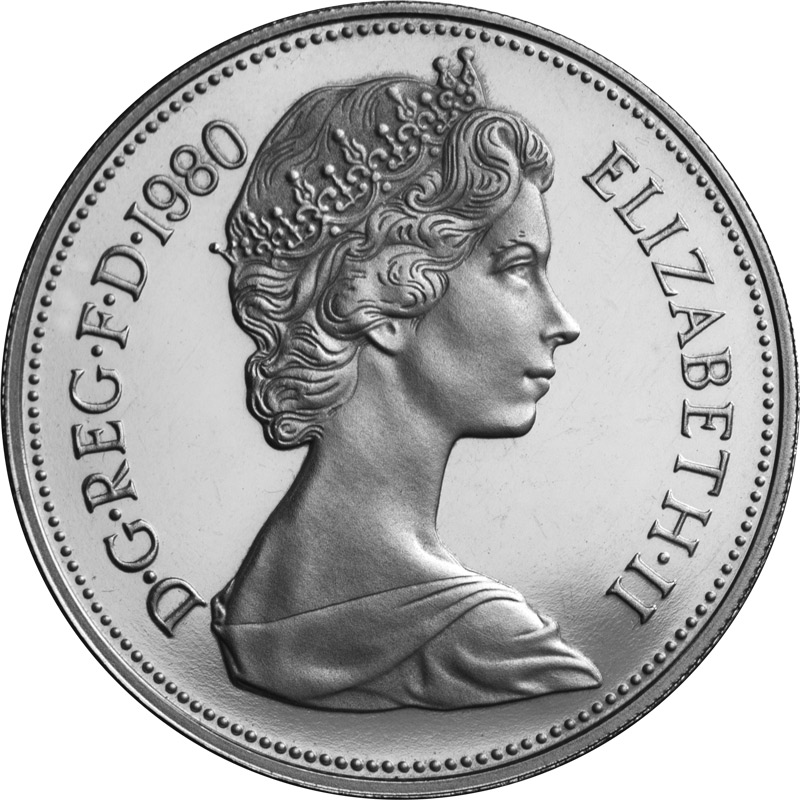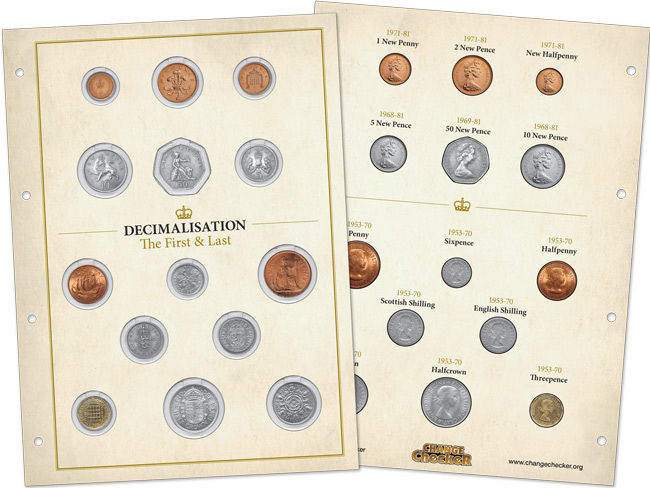Coin Info
£5 Coins – My top 5 designs
The UK £5 coin is legal tender, but you won’t ever find one in your change. They were first issued in 1990 and are usually reserved for commemorating Royal occasions. But many others also commemorate significant British anniversaries, and they are a favourite among collectors because of their interesting and powerful designs. I’ve picked out my top five here.
In the build up to the New Year’s Eve in 1999 these coins were widely given as a souvenir of the historic moment we shared when the clock ticked over into the new millennium. Jeffrey Matthews captured this perfectly with his clock hands passing through Greenwich, positioned at midnight. A limited number of these £5 coins were struck at the Millennium Dome and bear a small Dome mintmark (circled). You can count yourself lucky if you’ve got one of these rarer and more valuable versions!
One of the greatest landmarks in British history, the Battle of Trafalgar was fought on 21st October 1805. The Royal Mint marked the bicentenary with two £5 coins. The first of these designs by Clive Duncan, shows Nelson’s flagship Victory leading the fleet into battle. HMS Victory is in service to this day as the flagship of the Commander-In-Chief, moored in Portsmouth dockyard.
The Entente Cordiale was a series of agreements between Brtiain and France which ended nearly a millennium of intermittent conflict between the two countries. To mark the centenary in 2004 the Royal Mint released this commemorative £5 coin. The reverse design by David Gentleman features an unusual and striking combined image of Britannia and her French counterpart, Marianne, to symbolise the bond between Britain and France.
2010 Restoration of the Monarchy £5
In 1649, following the English Civil War and the subsequent execution of Charles I, the British monarchy was abolished and the kingdom became a republic with a new government presiding – the ‘Protectorate’ – led by Oliver Cromwell. This £5 coin issued in 2010 marks the 350th anniversary of the restoration of the monarchy under Charles II in 1660. The reverse design features a simplified version of Charles’ crown with the inclusion of oak leaves. Amidst the oak leaves the coin also features a rose and thistles representing England and Scotland respectively.
This is the Official Olympic £5 coin issued for London 2012, and aside from being a piece of Olympic memorabilia, what sets it apart from other £5 coins is that it was designed by a member of the public. The design was chosen as part of the Royal Mint’s nationwide competition open to art and design students in higher education. Saiman Miah’s creative idea features the iconic buildings of the London skyline and the River Thames within a central circle. The outer ring features pictograms in the style of a clock face, representing various sports at the London 2012 Games.
How many have you got in your collection?
Available in the Change Checker Shop
The £5 is the UK’s flagship coin, and we now have a limited number of £5 coins available in the Change Checker Shop
Click here to browse our full range.
The Royal Mint Coin Packs which look destined to become rarities
As every collector knows, an error can add significant value to a coin. You only need to look at the undated 20p saga to realise just how much impact a simple human mistake can have. Those 20p coins with a mismatching obverse and reverse still frequently sell for as much as £50.
But sometimes it also pays to look further than the coin itself for such slip-ups.
Brilliant Uncirculated presentation packs, or BU Packs, are issued annually by the Royal Mint and are a collector’s item in their own right. They contain a full set of uncirculated coins for the year, along with illustrated packaging and more information about each coin.
These packs are equally prone to human errors, and this year has already been an eventful one in that respect.
2015 Annual Coin Set
If you were among the first collectors to secure a 2015 UK Coin Pack from the Royal Mint, the likelihood is you’ve been sent one with a printed error.
The specification in these original packs states an edge inscription for both the Battle of Waterloo and the Churchill commemorative £5 coins, but in fact both of these base metal coins have milled edges with no inscription. Once the Royal Mint were made aware of the error, the packaging was promptly changed to remove the text, but of course a significant number of packs had already slipped the net.
The New Portrait BU Pack
The latest presentation pack was issued recently to mark Jody Clark’s new effigy of the Queen, with all coins featuring his new portrait.
Again, if you were quick to snap up one of these packs you may have noticed a couple of mistakes which were overlooked in production.
The first is an errant photographic library watermark which somehow found its way onto the final packaging, and appears in an image of the Queen and Prince Philip.
The second and more surprising mistake to look out for is the specification on the reverse stating Ian Rank-Broadley FRBS rather than Jody Clark as the obverse designer of the new coins.
At the time of writing, we understand the Royal Mint has withdrawn the pack from sale and are awaiting a re-print.
For now, it is impossible to say precisely how rare these packs are, and it is unlikely that the Royal Mint will ever disclose the exact number.
It’s normal to feel short-changed if you’ve bought any item which has a defect. However, if you have recently added one of these error packs to your collection, you have actually secured something which is quite special to collectors, and may turn out to be highly prized in years to come.
Almost half of Change Checkers prefer Machin
Jody Clark’s new effigy of Her Majesty means there have now been a total of five Queen Elizabeth II portraits on our decimal coins, and recently we asked you to pick your favourite of the lot.
Voting is now closed, the results are in, and there is a clear winner…
With a landslide of nearly 43% Arnold Machin’s portrayal of Queen Elizabeth II was voted as your favourite.
Machin’s portrait was used on British coins between 1968 and 1984 and replaced Mary Gillick’s coronation portrait which had been in place since 1953.
With decimalisation edging closer in the sixties, it was decided to refresh the existing Queen’s portrait in time for the new coinage.
Gillick’s original was a popular and youthful portrayal, but with the Queen approaching 40, a change was needed.
Arnold Machin was one of several artists chosen to compete for the new effigy. He was a talented sculptor and tutor at the Royal College of Art when his design was chosen for the second portrait and was granted four sittings at Balmoral and Buckingham Palace to perfect his work. It was approved in 1964 but not seen on our coinage until the very first 5p and 10p pieces of 1968.
Like Gillick, Machin decided against the couped (cut-off at the neck) style which had been so common for previous monarchs. He added draping around the shoulders and replaced the laureate with the Girls of Great Britain and Ireland tiara which was given to Elizabeth from Queen Mary as a wedding gift.
A new era for British coins
So why did Machin’s new portrait become so popular, and why is it still popular with Change Checkers?
For many, it is about what his effigy represents. Machin’s elegant portrayal of a young Queen become synonymous with decimalisation and the beginning of a new era for British coins. Of course, for others it is simply about an affinity with the coins they grew up with.
These days, Machin’s portrait only exists on a few denominations, but even if you haven’t noticed it on our coins, it is probably very familiar to you.
In fact, it is the most widely reproduced single work of art in history.
Machin’s effigy was first used on postage stamps in 1967, and has subsequently been used on almost all British definitive stamps. It is estimated that there have been approximately 320 billion copies produced to date, and this figure is rising daily.
Whilst many of us may not be familiar with Arnold Machin, his portrait has reached more people than he could ever have imagined, and it is evidently still a firm favourite with collectors.
Now you have the chance to own some of the very first decimal coins to feature Machin’s new portrait.
The First and Last Decimalisation Collector Page includes 14 original coins which allow you to compare decimal and pre-decimal coins in a rare pairing of old and new.












